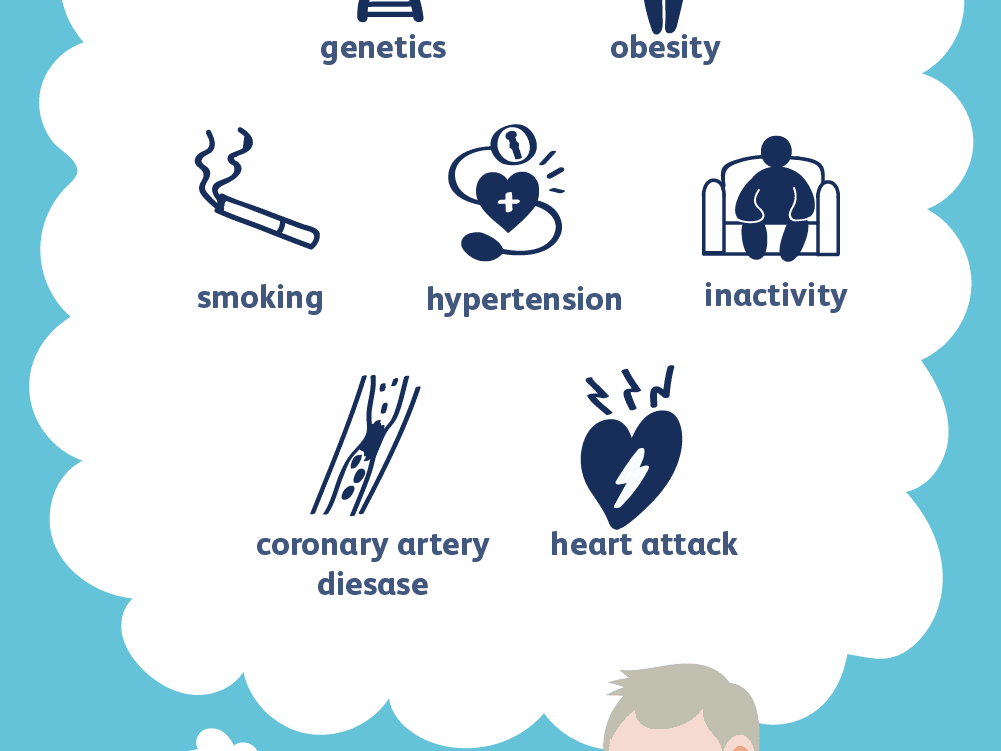Heart Disease Causes

There are many causes of heart disease, from genetics to lifestyle. The most common risk factors include smoking, high cholesterol, and obesity. However, there are also several factors that increase the likelihood of developing heart disease. These risk factors are easy to control, and they can even be changed. Listed below are the most common and preventable types of heart disease. To reduce your risk, try reducing your risk factors. These are simple and effective ways to reduce your chances of developing heart disease.
Coronary artery disease is a condition that occurs when the blood vessels in the heart become clogged with plaque. The plaque blocks the blood vessels and restricts the flow of oxygen and nutrients to the heart. It can cause symptoms such as angina, heart failure, or an arrhythmia. Ultimately, heart disease can lead to heart attack or death. Therefore, it is vital to avoid smoking and stay physically active. To lower your risk of developing heart disease, make sure you exercise regularly.
Cardiomyopathy can lead to heart failure, and the most common type is dilated cardiomyopathy. This condition occurs when the left ventricle becomes wider than normal. It can be caused by a number of different things, including an underlying disease or toxins. In some cases, a person can develop heart failure due to smoking or being exposed to secondhand smoke. Age can also result in weakened heart muscles, and a person with a family history of the disease may have more frequent or prolonged attacks of this condition than those with another ailment.
The heart is a muscle in the chest that pumps blood around the body. The heart beats roughly 70 times a minute. It receives oxygen-rich blood from the lungs. It returns to the heart via veins and arteries. The process is known as circulation. The coronary arteries are responsible for providing oxygen-rich blood to the heart. If these arteries become blocked, coronary artery disease can result. The pain in the chest can spread to other parts of the body, and if left untreated, it can lead to severe complications, including a heart attack and death.

Restrictive cardiomyopathy is a form of heart disease that causes the heart muscle to become less elastic and rigid. It can occur for no known reason and can be caused by diseases, connective tissue disorders, abnormal proteins, and amyloidosis. Women are more susceptible to heart disease than men, and men are more likely to suffer from it than whites. They are at increased risk for the disease. They may also suffer from the symptoms of both conditions.
The most common heart disease causes are smoking, high blood pressure, and age. Older men and women are at an increased risk for heart attacks. Other common risks include high blood pressure and a family history of heart disease. While these are the most common causes of death for Americans, there are other risk factors as well. In addition to smoking, women are more likely to experience chest pain during physical activity than men do. And women are less likely to call 9-1-1 if they have symptoms of heart disease than men.
Infection is another major cause of heart disease. Infection can occur from viruses, bacteria, or other microbes. If the infection is severe, it can cause inflammation of the heart muscle and cause blockage. While there are many other causes of heart disease, the most common is inflammation of the heart muscles. People with this condition are at a higher risk of developing the disease if they do not exercise. They also tend to have high blood cholesterol.
Heart disease causes are not limited to cardiovascular problems. Infection of the heart can be caused by bacteria, parasites, or other microbes. When these organisms infect the heart, they attach themselves to damaged parts and block the blood flow. Infection can also be caused by chemical agents. The infection can be caused by any of these microbes. Sometimes, it can be life-threatening. Inflammation of the heart can lead to angina or even angina.
Certain conditions can damage the heart muscle. The valves of the heart can become clogged with calcium and become weaker. This leads to the heart muscle being overworked. The condition can also lead to heart failure and other complications. The most common symptoms of heart disease are chest pain, irregular breathing, and a decreased ability to exercise. When these problems occur, it is important to consult with a physician to ensure that you are not suffering from any of these conditions.
